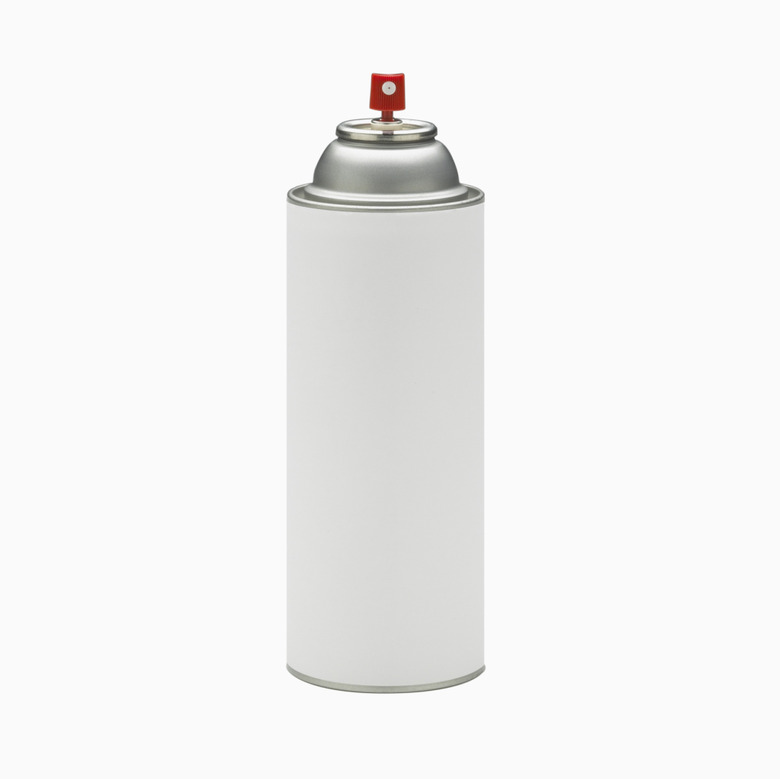What Cleans Up WD-40?
WD-40 is a petroleum-based maintenance and cleaning product that is used to lubricate hinges, protect metal surfaces against rust, prevent short-circuits and remove or dissolve grease and adhesives. If your can of WD-40 begins to leak, you accidentally dispense too much or you are using the product as a cleaning agent, clean up the excess with a dry cloth or sponge.
WD-40
WD-40
According to the manufacturer's website, WD-40 was originally invented in 1953 to prevent metal surfaces from rusting. "WD" stands for "water displacement," which is what the product does — it acts as a buffer between a surface and water. Because of this, water is not usually an effective way to clean up WD-40. The product is safe to leave on most materials, with the exception of polycarbonate, clear polystyrene plastic and other substances that petroleum damages.
Basic Cleanup
Basic Cleanup
After you apply WD-40 to a sticky, rusted or greasy surface, wipe the product off the surface with a dry, clean cloth. The dirt or adhesive on the surface should wipe off with the product. If the product comes into contact with your hands, the WD-40 Material Safety Data Sheet instructs you to wash your hands with soap and water. Wipe your hands thoroughly after washing them to remove any excess product that did not bond to the soap.
Spills
Spills
Because WD-40 is made of petroleum, it behaves like oil — it will float on water, and it wipes clean more easily than it washes clean. If you spill a large quantity of WD-40, a cloth might not be sufficient to absorb all of it. Use dry, clean sponges to soak up the product, and wipe off any of it that the sponges do not collect. Wear chemical-resistant gloves and safety goggles to protect yourself.
Cautions
Cautions
WD-40 is nontoxic when used in a well-ventilated area, but inhaling large amounts of it can be harmful. If you spill WD-40 inside, open windows to allow the fumes to clear the space before you attempt to clean it up. WD-40 is flammable, and if you spill it near an open flame or an electrical current, leave the room and call the fire department for assistance. If it catches on fire, don't try to extinguish it with water, because the burning WD-40 will spread across the water's surface. Carbon dioxide, foam or water fog can put it out.
